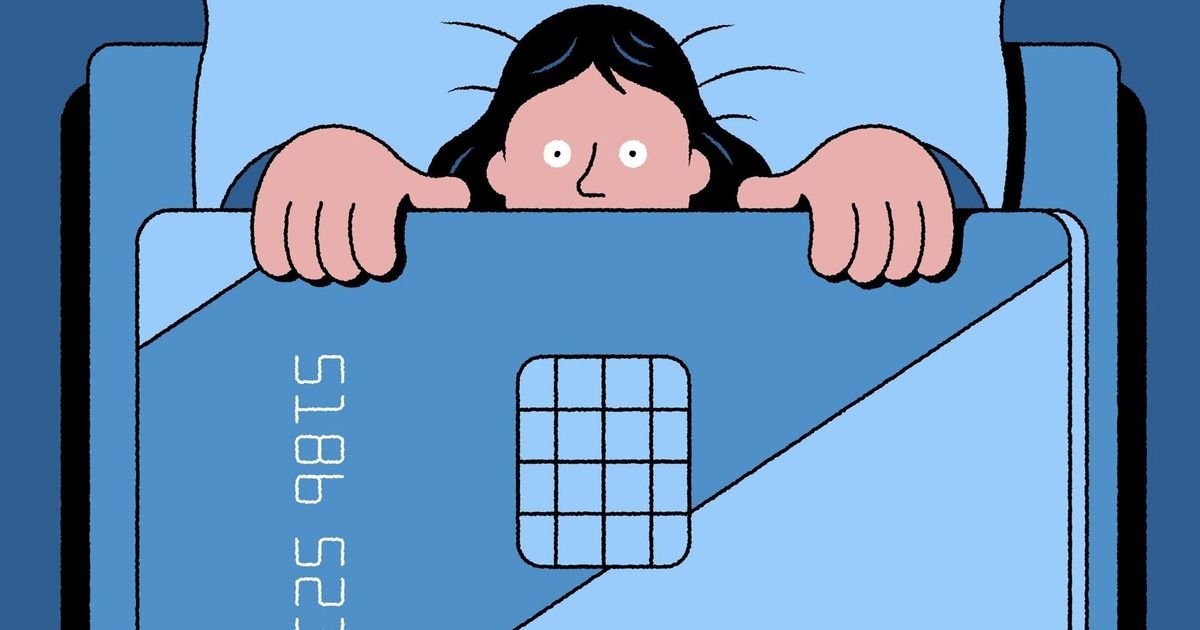Credit card debt is weighing on many Americans.
The share of credit card holders making just the minimum monthly payment is at a 12-year high, the Federal Reserve Bank of Philadelphia reported last month. People are spending more on their cards but paying off less, increasing the amount of debt carried month to month and paying more in interest. And more people are late in paying their monthly card bill.
“Credit card performance is showing signs of consumer stress,” the bank’s report said.
Adding to the stress is the fact that interest rates on credit cards have risen in recent years. The average rate was more than 21% at the end of last year, the Federal Reserve said, compared with about 15% in 2019.
So whether you observe “frugal” February or try a “no spend” challenge, now is a good time to make a plan to chip away at your balances.
Right after the new year, “people have so many things on their mind,” said Charlestien Harris, a financial counselor in Clarksdale, Mississippi, with Southern Bancorp Community Partners. “By February, a person has a chance to settle down. You can begin to focus more and name a goal or two.”
If you’re worried about your card debt, there are options that can help you get it under control — such as transferring your balance to a lower-rate credit card, if you qualify. But the first step is to get a clear picture of your spending habits, said Daniel Yerger, a fee-only financial planner in Longmont, Colorado.
“Before you consolidate or refinance the debt, you have to address the ‘why’ of what’s happening,” Yerger said. If you are consistently spending beyond your means, moving the debt to a new card isn’t likely to help in the long run. “We can shuffle it around,” he said, “but you want to get ahead of it.”
Yerger suggests looking at 12 months of spending — often, you can download transactions from your online account into a spreadsheet — to sum up where your money is going. Even people with higher incomes can fall into a card overspending trap, he said.
Often, people have card debt because of unavoidable medical bills, Harris said, but even smaller purchases can add up, particularly for those on a tight budget. She gives what she calls her “pop and chips” talk. “Most people have a habit,” she said. So a stop to buy gas for the car can easily get costly if you also buy snacks and soda and perhaps a lottery ticket. Simply being aware of the pattern, she said, can help people spend less and perhaps put a bit more cash toward paying down debt or building a savings cushion. (She prefers to call it a “spending plan” instead of a budget because it sounds less burdensome.)
Harris suggests that her clients try “Frugal February” — avoiding discretionary spending and impulse purchases, and putting the money toward debt reduction or savings — because it’s a short month, and people often stay home anyway because of cold weather. The steps can be small, she said, like watching a movie on a streaming service you already pay for instead of going out to a theater. Since it’s tax season, she said, filers expecting a refund can consider using it to pay down debt and set aside cash for unplanned expenses.
Another option, popularized on TikTok, is a “no spend” challenge, which involves paying only for necessities for a set period of time, whether a weekend, a week or longer. Yerger said that approach can be a helpful short-term experiment to gain insight into spending habits. But he cautioned that relying on willpower alone to stop overspending is difficult: “It takes more effort than they might expect.” Psychologically, he said, making a more substantial, one-time change is likely to be more sustainable than having to make the same decision — say, to skip buying a latte — 30 times a month.
If you have good credit, looking for a credit card offering a zero percent balance transfer may be an option if you think you can pay off the debt during the promotional period. Some available offers give consumers up to 21 months to pay off the transferred balance with no interest, said Ted Rossman, senior industry analyst at the financial website Bankrate. Typically, the offers require a fee of 3% to 5% of the balance transferred. (On a $1,000 balance, that adds $30 to $50.)
Another option, if you are a homeowner, is to borrow against the equity in your house — the difference between the home’s value and your mortgage. Many Americans have high home equity because housing values have risen. Rates on home equity loans and lines of credit are typically far lower than rates on credit cards because they are secured by your house. That means, however, that if you can’t pay back the debt, you could risk losing your home through foreclosure. So tapping home equity is advisable only if you’re confident you can repay the loan.
If you are struggling with repaying card debt, Rossman suggested talking to a nonprofit credit counseling agency, which can help negotiate much lower rates on card debt in exchange for an agreement to pay it off over a period of several years. Kristen Holt, CEO of GreenPath Financial Wellness, a nonprofit counseling group based in Farmington Hills, Michigan, said the average debt of people enrolling in its debt management plans was about $21,000.




